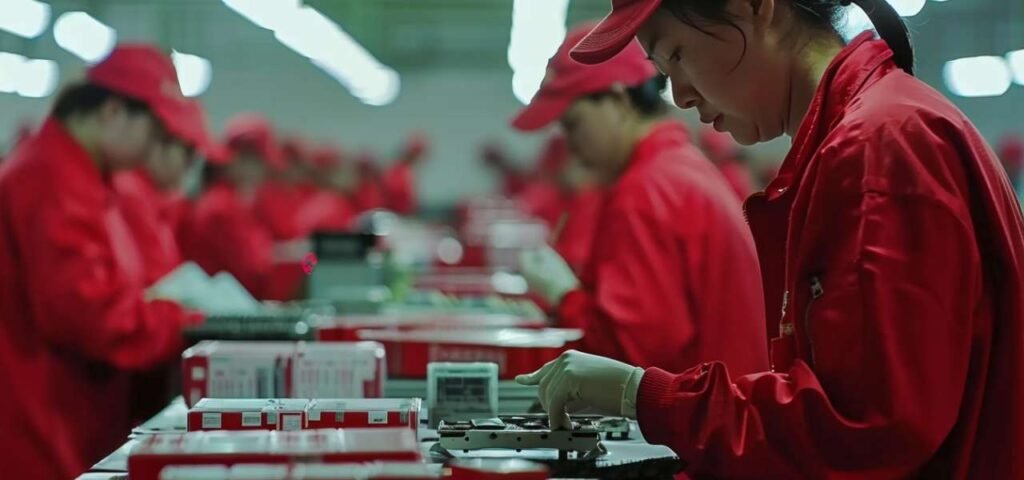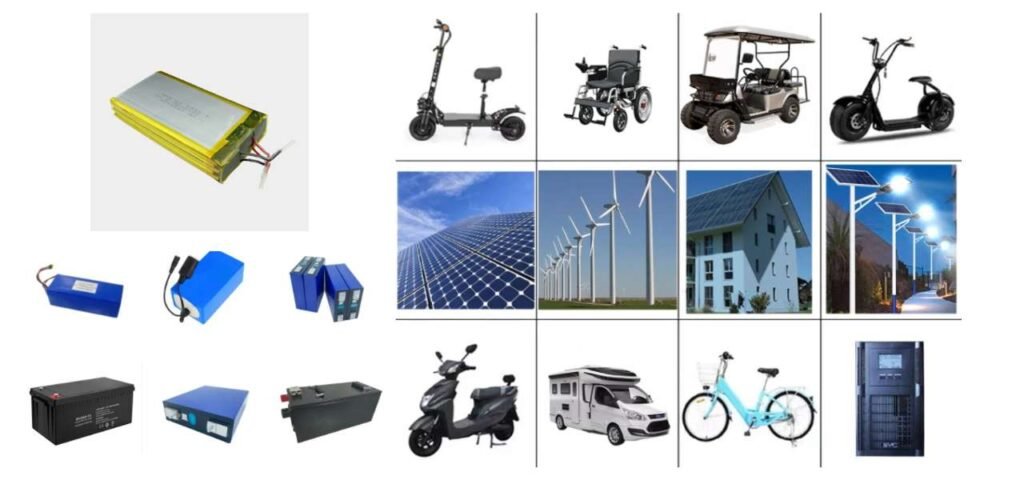1.What are high-rate batteries?
High-rate batteries generally refer to lithium batteries. Lithium-ion batteries are a type of high-rate rechargeable battery that relies on the movement of lithium ions between the positive and negative electrodes to function. During the charge and discharge process, Li+ ions shuttle back and forth between the two electrodes: during charging, Li+ ions de-intercalate from the positive electrode and intercalate into the negative electrode via the electrolyte, putting the negative electrode in a lithium-rich state; during discharge, the opposite occurs. Batteries typically use materials containing lithium elements as electrodes and represent the epitome of modern high-performance batteries.

2.Introduction to high-rate batteries
Lithium batteries are divided into high-rate batteries and lithium-ion batteries. Currently, what people commonly refer to as high-rate batteries in cell phones and laptops are lithium-ion batteries. True high-rate batteries are rarely used in daily electronic products due to their high risk.
3.Efficiency of high-rate battery operation
Lithium-ion batteries have a high energy density and a uniform output voltage. They exhibit low self-discharge, with good batteries losing less than 2% of their charge per month (recoverable). They do not exhibit memory effects. They operate over a wide temperature range of -20°C to 60°C. Lithium-ion batteries have superior cycling performance, can charge and discharge rapidly, achieve charging efficiency of up to 100%, and deliver high output power. They also have a long service life. They are environmentally friendly, containing no toxic substances, and are known as green batteries.
4.Charging of high-rate batteries
Charging is an important step in the repeated use of batteries. The charging process of lithium-ion batteries is divided into two stages: the constant current fast charging stage and the constant voltage current decay stage. In the constant current fast charging stage, the battery voltage gradually increases to the scale voltage of the battery, and then transitions to the constant voltage stage under the control of the chip, where the voltage no longer increases to ensure that overcharging does not occur. Meanwhile, the current gradually decreases with the increase in battery capacity until it reaches the set value, ultimately completing the charging process. The battery capacity can be calculated by sampling the discharge curve using a battery monitoring chip. After multiple uses, the discharge curve of lithium-ion batteries may change. Although lithium-ion batteries do not exhibit memory effects, improper charging and discharging can significantly affect battery performance.
5.Considerations for high-rate batteries
Overcharging and overdischarging of lithium-ion batteries can cause permanent damage to the positive and negative electrodes. Excessive discharge causes collapse of the carbon layer structure of the negative electrode, leading to the inability of lithium ions to intercalate during charging; excessive charging causes excessive lithium ions to be embedded in the carbon structure of the negative electrode, resulting in some lithium ions being unable to be released. The charging capacity is the product of the charging current and charging time. Under a certain charging control voltage, the larger the charging current (the faster the charging speed), the smaller the charging capacity. Overly rapid charging and improper termination voltage control can also result in insufficient battery capacity. This occurs when some electrode active materials do not undergo sufficient reactions before charging is stopped, and this insufficient charging phenomenon worsens with an increase in the number of cycles.
6.Discharging of high-rate batteries
For the initial charge and discharge, if time permits (generally 3-4 hours are sufficient), the electrodes can be brought to the highest oxidation state as much as possible (fully charged), and during discharge (or use), they are discharged to the specified voltage or until automatic shutdown occurs. This can activate the battery’s capacity for use. However, in the normal use of lithium-ion batteries, such operations are not necessary. Charging can be done according to need at any time, and it is not necessary to fully charge or discharge the battery. Such operations as the initial charge and discharge should only be performed once every 3-4 months.

7.Battery technology for high-rate batteries
For electric vehicles and hybrid vehicles, the core technology lies in the battery. Compared to other types of batteries, although power lithium-ion batteries have the disadvantages of high price and poor safety performance, they have important advantages such as high specific energy and long cycle life, making them have broader development prospects. The technological development of power lithium-ion batteries is also advancing rapidly, with improvements in capacity and structure. Experts in the field have stated that regardless of the technological route chosen by battery manufacturers, it should meet high safety, wide temperature range, strong charge and discharge functionality, and good rate discharge performance.
The size of the battery capacity involves technology and cost. Lithium-ion batteries can be divided into small batteries and large batteries according to volume. Small batteries are usually used in 3C electronic products, and the related technologies and industries have become very mature, with overall profits declining. Currently, more than 85% of lithium-ion battery products are small batteries.
Large batteries, also known as power batteries, also have two types: small power batteries and large power batteries. The former is mainly used in power tools, electric bicycles, etc., while the latter is used in electric vehicles and energy storage fields. Currently, pure electric vehicles (EVs), plug-in hybrid electric vehicles (PHEVs), and hybrid electric vehicles (HEVs) are undergoing rapid development and receiving significant attention from the industry. As the core of the future automotive industry, the development of power lithium-ion battery industry has received unprecedented attention and has been elevated to a strategic level by major countries. Yang Rukun, President of Shenzhen Jiyang Automation Technology Co., Ltd., said that small batteries cannot compare with large batteries in terms of product profitability or development scale. Although the scale of the power lithium-ion battery industry is still small, the mass production of electric vehicles has brought important development opportunities to the power lithium-ion battery industry. According to calculations by authoritative industry institutions, in the next few years, the market for power lithium-ion batteries will exceed the global market for lithium-ion batteries for mobile phones, which will trigger a new round of investment in related manufacturing equipment and factories. At the same time, the entry of major manufacturers into the power lithium-ion battery industry will intensify the technological competition in related fields.
Currently, whether to adopt a single large-capacity battery technology solution or a small-capacity battery parallel technology solution has been a contentious issue in the industry. However, the key to which technology route to adopt depends on the results of the battery pack, and whether it is competitive in terms of volume, weight, product quality, performance, price, and installation convenience.
8.Coated carbon aluminum foil for high-rate batteries
(1) Material description
Coated carbon aluminum foil is made by applying a composite slurry primarily composed of conductive carbon and high-purity electronic aluminum foil using a transfer coating process.
(2) Application range
Power-type lithium batteries with fine particle active materials
Positive electrodes composed of lithium iron phosphate
Positive electrodes composed of fine particles of ternary/lithium manganese oxide
Used as an alternative to etched aluminum foil in supercapacitors and primary lithium batteries (lithium, lithium manganese, lithium iron, button batteries, etc.)
(3) Effects on battery/capacitor performance:
Suppresses battery polarization, reduces heat generation, and enhances rate performance;
Lowers the internal resistance of the battery and significantly decreases the dynamic resistance increase during cycling;
Improves consistency and increases the battery’s cycle life;
Enhances the adhesion between active materials and current collectors, reducing the manufacturing cost of electrodes;
Protects current collectors from corrosion by the electrolyte;
Enhances the high and low-temperature performance of lithium iron phosphate batteries and improves the processing performance of lithium iron phosphate and lithium titanium oxide materials.
(4) Recommended parameters:
The corresponding coated active material D50 should preferably not exceed 4-5 μm, the compacted density should not exceed 2.25 g/cm³, and the specific surface area should be within the range of 13-18 m²/g.
(5) Precautions for use:
a. Storage requirements: Store in an environment with a temperature of 25±5°C and humidity not exceeding 50%. During transportation, avoid exposure to air and water vapor that could corrode the aluminum foil.
b. This product is available in two versions, A and B, each with its key characteristics: A version has a black appearance, with a typical coating thickness of 4-8 μm on both sides, exhibiting better conductivity. The B version has a light gray appearance, with a typical coating thickness of 2-3 μm on both sides. The coating area can be welded with fewer layers, and the coating machine can identify jumper gaps.
c. The B version (gray) coated carbon aluminum foil can be directly ultrasonically welded in the coating area, suitable only for winding battery welding tabs (up to 2-3 layers of tabs). However, adjustments may be needed for ultrasonic power and time.
d. The thermal conductivity of the carbon layer is slightly poorer than that of aluminum foil, so adjustments to the belt speed and baking temperature are necessary during coating.
e. This product significantly improves the overall performance of lithium batteries and capacitors. However, it should not be considered the primary factor in changing certain aspects of battery performance, such as energy density, high and low-temperature performance, high voltage, etc.

